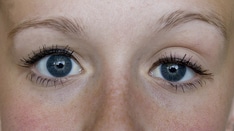Abstract and Introduction
Abstract
Purpose: To retrospectively evaluate the safety and efficacy of an Ahmed glaucoma valve (AGV) modified with a polyethylene shell (M4) to reduce the fibrotic reaction around the drainage plate compared with the S2 and FP7 models in patients with glaucoma.
Methods: The medical records of patients who underwent implantation of the AGV FP7, S2, and M4 were reviewed. The primary outcome measure was cumulative probability of success, defined as an intraocular pressure (IOP) between 5 and 18 mm Hg and >20% reduction of IOP without loss of light perception, need for additional IOP-lowering surgical procedures, or removal of AGV.
Results: Seventy-six, 38, and 40 eyes received the FP7, S2, and M4 with a mean follow-up time of 578±157, 662±186, and 504±158 days, respectively. The mean IOP was reduced from 31.0±10.6 to 13.9±5.5 mm Hg in the FP7 group, 33.5±12.1 to 15.8±8.1 mm Hg in the S2 group, and 27.0±12.0 to 15.0±4.0 mm Hg in the M4 group at 1 year (P = 0.31). At 1 year, the cumulative probability of success was 70%, 66%, and 80% and at 18 months, 61%, 53%, and 52% in the FP7, S2, and M4 groups, respectively (P = 0.99). Complications were similar among groups.
Conclusions: No significant difference was observed between the AGV M4, FP7, and S2 at 1 year. Additional follow-up is required to determine its long-term safety profile and efficacy.
Introduction
The Ahmed glaucoma valve (AGV; New World Medical Inc., Rancho Cucamonga, CA) is an aqueous shunt device used to control intraocular pressure (IOP) in glaucoma. It incorporates a valve mechanism to prevent hypotony, which is particularly important during the early postoperative period before the plate has encapsulated. Although a high proportion of patients achieve initial IOP control with the AGV, this number declines over time which is similar to other glaucoma implants. At 1 and 4 years, the reported probability of success for AGVs ranges from 63% to 88% and 37% to 54%, respectively.[1–6]
As with all glaucoma drainage devices (GDDs), the success of the device depends on the properties of the fibrovascular capsule. The capsule consists of an inner layer of compressed collagen and an outer layer of vascularized tissue.[7] Histologic studies have shown that there is an early inflammatory component consisting of recruitment of macrophages, lymphocytes, and polymorphonuclear cells, during which time the capsule is formed.[8] Over time, the extracellular matrix in the capsule undergoes remodeling which likely affects its hydraulic conductivity.[9] It is believed that aqueous humor is shunted from the anterior chamber into the capsule and then is cleared through passive filtration into surrounding small vessels.[10]
In attempts to improve success rates of GDDs, pharmacologic agents and biomaterials have been used to modulate the fibrovascular response to improve its hydraulic conductivity.[11,12] Although treatment with mitomycin-C has improved the success of trabeculectomies, it has not had the same success with GDDs.[13] In contrast, modulation of the size, shape, flexibility, and material of the implant have improved its function.[12] Studies suggest that implants with larger surface area[14] and those made of silicone which may be less inflammatory than polypropylene[8,15] have improved success. Recently, we have shown that AGVs with a surrounding porous membrane of expanded polytetrafluoroethylene (ePTFE) have thinner and more vascular capsules than unmodified implants.[16] In animal models, this implant behaved as a variable resistor with higher resistance at low flow rates and lower resistance at high flow rates.[17] These studies support the notion that porous biomaterials may improve the hydraulic conductivity of the capsule.
The AGV M4 is a modified AGV S2 containing identical valve mechanism. However, manufacture of the AGV with ePTFE was difficult, and the deformability of the ePTFE membrane did not establish optimal fluid pressure distribution. Because we were familiar with more desirable stiffness of porous high density polyethylene (Medpor; Porex, Atlanta, GA; subsequently Stryker Corp., Kalamazoo, MI) as a biocompatible alloplastic material that has been used for craniofacial reconstruction for over 30 years, we (R.R.A., B.K., and S.A.) decided to use Medpor for the encasing porous polymer. The pores allow for rapid tissue integration and vascular ingrowth that imparts resistance to infection, exposure, extrusion, and mechanical deformation.[18,19] Histologically, collagen and mature blood vessels course through the pores of the alloplast.[20] Animal studies with similar versions of the AGV M4 have shown that the capsules are thinner and more vascular and have reduced outflow resistance compared with the AGV S2.[21] In the present study, we report on our clinical experience with the AGV M4. One version of the FDA-approved AGV M4 is currently manufactured by New World Medical Inc.
J Glaucoma. 2014;23(2):E91-e97. © 2014 Lippincott Williams & Wilkins






